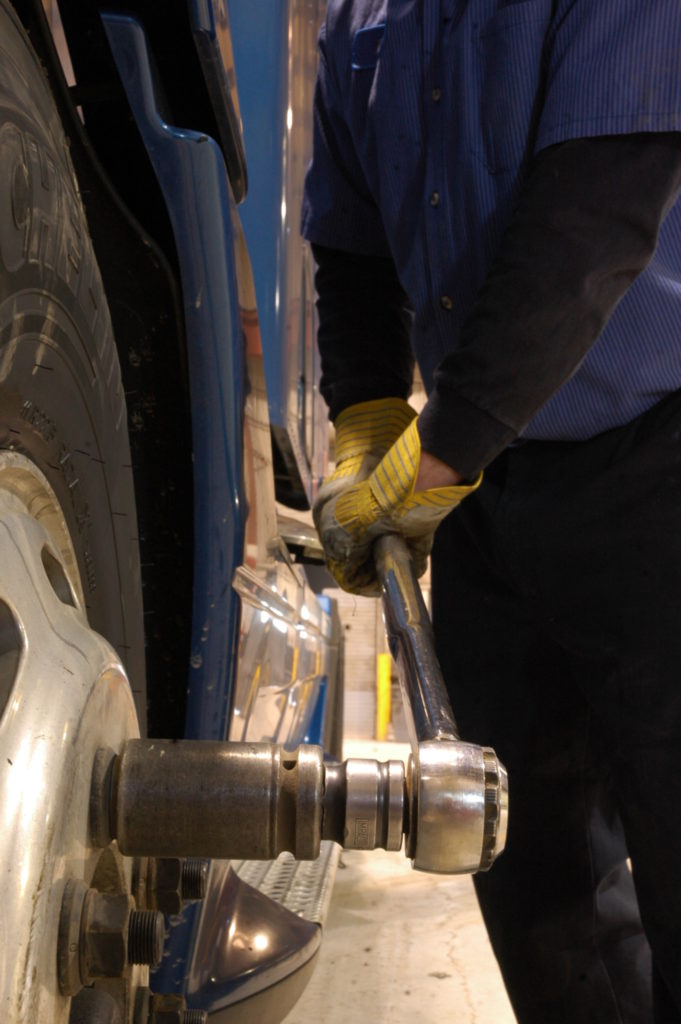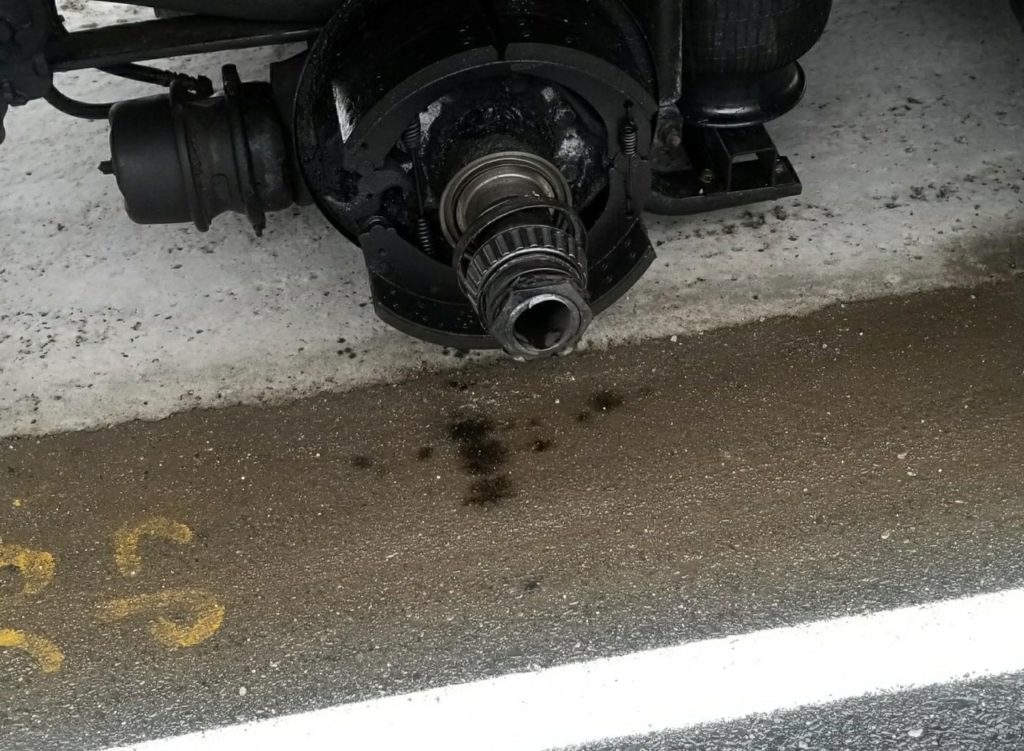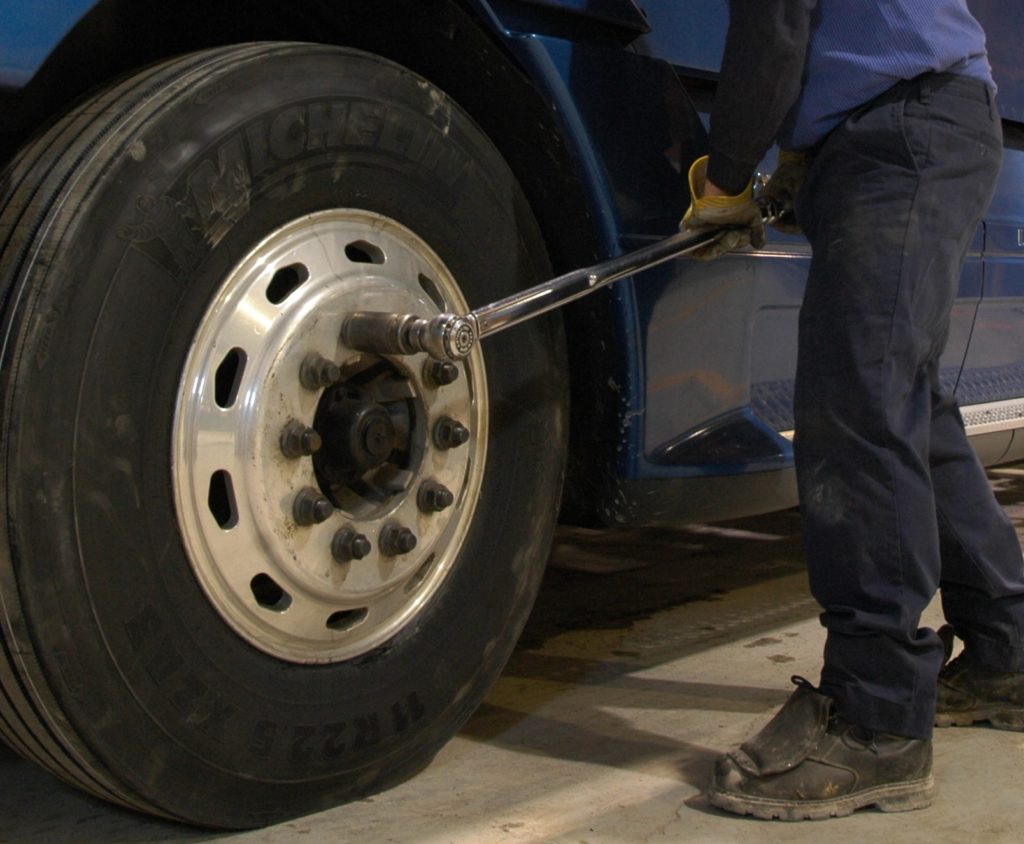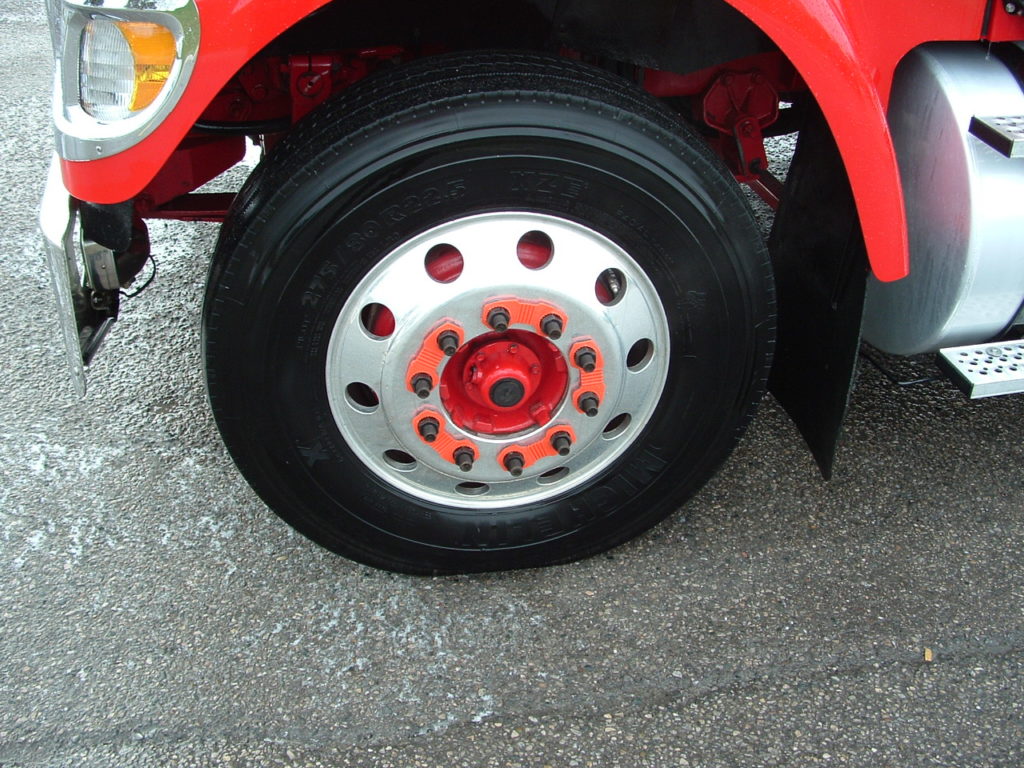4 considerations to keep wheels safe and secure

Keeping your wheels where they belong should simply be a matter of process. Here are four reminders of what needs to be done when servicing truck tires and wheels to ensure they do not separate from the truck.

Bearing installation and adjustment
Wheel bearings account for a smaller percentage of the overall number of wheel separations, but they are a causal factor. Wheel-end failures result from over- or under-tightened bearings or lack of lubrication. Under-tightening (excessive endplay) can cause the wheel to wobble on the spindle, damaging the seal, which can lead to a loss of lubricant and eventual failure of the bearings. Over-tightening (excessive preload) can damage the bearing causing overheating, seal failure and lubricant loss.
Bearing manufacturer SKF strongly recommends establishing accurate and repeatable wheel bearing installation/adjustment procedures to ensure consistency, as does Recommend Practice 618B from the American Trucking Associations’ Technology & Maintenance Council (TMC). It describes a nine-step installation and adjustment process, depending on the type of wheel-end assembly, ending with the use of a dial indicator to verify correct adjustment. But industry sources say that final step is often left out, despite being one of the most critical parts of the process.
“That’s a recommendation for an ideal situation,” admits SKF key account manager John Heffernan. “Getting techs to use torque wenches was a huge step for the industry. Use of dial indicators is growing, and more fleets are adopting the practice, but we still have a long way to go.”
Additionally, Heffernan says techs occasionally incorrectly install pre-set or LMS-type hub systems, torquing the nut down and then backing it off, as they would when installing conventional single- or double-nut systems. “That can damage the spacer and the bearings,” he says. “Fleets should work with the techs to ensure they understand how to install the various types of wheel-end systems they use.”
Bearing failure leading to a separation takes time — first, for the lubricant to leak out, which leaves very visible oil residue on the inside tires. Then the bearing has to heat up enough to self-destruct. Drivers should be made aware of the symptoms of a pending bearing failure, such as oil on the tires, excessively hot wheel hubs, smoke, or a burning odor from the wheels or grinding noises. Drivers should also be alert for ABS lights coming on unexpectedly, which according to Jeremy Gough, director of national fleet maintenance at Bison Transport, could be caused by a loss of contact between the sensor and the excitor ring, resulting from a wheel that’s flopping around on the axle spindle.
Gough takes steps to ensure bearing and wheel installation is done right in the first place. For example, having a second technician check the work before the truck or trailer is released from the shop. He also puts every technician involved in wheel-end work through a training program at least once a year. Drivers get similar training, but specific to what they can do to prevent wheels from coming off, he says.
“We take the threat of wheel separation seriously,” he says. “We use the pointer-type wheel-nut indicators that will show us if a nut is loosening off. And we check all the wheel fasteners on every truck that comes into the shop, even if it’s for a lighting issue. We check the nuts first, then fix the lights.”

Wheel and hub preparation
Before you even think about putting the wheel back on the truck, there’s a little prep work to do. The contact surfaces between the hub and the inner and outer wheels must be absolutely free of dirt, rust, grease and other contaminants.
“A buildup of foreign material on the wheel end mounting surfaces causes extra thickness in the joint,” says Brandon Uzarek, Accuride’s field engineer for wheels. “The foreign material may settle or work its way out of the joint, causing the tension in the bolt to decrease, resulting in a loss of clamping force.”
Extra care is needed with painted steel wheels. For one thing, rust can develop under the paint if the finish is broken, causing flaking. This material can drop out over time, reducing the clamping force. The coating thickness on a painted wheel is important, too, as coatings thicker than 3 – 3.5 mils thick can affect the mounting surfaces between the bolt holes.
The contact areas must be rigorously cleaned with a wire brush to remove all foreign material before mounting the wheel. Wheel studs should be cleaned with a wire brush as well to rid the thread grooves or rust and foreign material that can affect the torque on the nut.
Proper fastener torque
“A brand-new Grade 8 M22-1.5 wheel-bolt and nut can provide approximately 50,000 lb. of clamping force when 500 lb-ft of torque is applied. When applied to the entire 10-bolt wheel-end on a hub-piloted wheel, that equates to 500,000 lb. of clamping force,” says Uzarek.
Those figures apply to new wheel nuts, usually mounted on new hubs using new studs. There’s little published research on the impact of hardware aging and degradation caused by use and environmental factors, but the Heavy Vehicle Wheel Separations: Exploring The Causes study, by Ottawa-based Woodrooffe and Associates, suggests that re-using degraded flange nuts could be problematic.
“Anecdotal tests have shown that as [two-piece] flange nuts age, or when they are re-used, their torque/clamping force characteristics can be as little as 50% of the design value,” the report notes. “Given that hub-piloted wheels depend exclusively on clamping force to prevent the wheel from separating from the hub, it is clear that such a reduction in torque/clamp force characteristics represents a significant risk to wheel separation.”
Tighter is not better, especially when re-using studs and nuts. Many technicians attempt to achieve maximum clamping force by applying more than 500 lb-ft of torque without realizing the possible consequences.
“If a wheel stud is subjected to excessive torque, it is possible to stretch the stud past its yield point,” cautions Uzarek. “If this occurs, the joint will act as if it is under-torqued and there will be low clamping force.”
The best way to avoid this condition is to snug the nuts and then bring them up to their final torque with a calibrated torqueing device.
“Impact guns are not recommended,” Uzarek stresses.
Bison uses a calibrated pneumatic torque wrench from McCann, which Gough says cost about $8,000.
“We don’t cut corners on wheel maintenance and service,” he says. “It’s not cheap, but the money is better spent being proactive than reactive.”

Wheel fastener retorque
With all that said, there remains one step in this process that fleets rarely, if ever, comply with: the wheel-fastener retorque. The manufacturers of heavy truck wheels recommend that wheels be checked for correct torque between 80 and 160 km after wheel installation. Doing that is extremely difficult in a logistics sense for most fleets, but there are alternatives
Some suggest running the truck around the yard with a loaded trailer, doing a series of tight right and left turns and hard brakes to give the wheels an opportunity to settle onto the studs and against the mounting face of the hub, and then retorquing them. Others recommend flagging the unit for a retorque the next time it arrives in the yard.
Neither situation is ideal, but both are better than ignoring the requirement to retorque the wheels after installation.
Have your say
This is a moderated forum. Comments will no longer be published unless they are accompanied by a first and last name and a verifiable email address. (Today's Trucking will not publish or share the email address.) Profane language and content deemed to be libelous, racist, or threatening in nature will not be published under any circumstances.
Great article Jim.
I work as a bolting expert for HYTORC, mainly on nuclear reactors. We recently converted innovative industrial bolting solutions into the Grip-Tight lug nut. This solution, in conjunction with our calibrated battery torque tool, is addressing most the issues raised in your article.
Would it be possible to share this over the phone or video call? I’m sure this will be of great interest to you.
Kind regards,
Emmanuel
Mr. Jim Park
Fantastic written article regarding wheel torque.
Could you possibly write a brief article advising all operators conduct a preventative maintenance program.
Companies may have half of their fleet sitting idle due to the pandemic, this would give the mechanical shop freedom to inspect their fleet without pressure. Checking King Pin / Brakes / tires and wheel studs for proper adjustments.